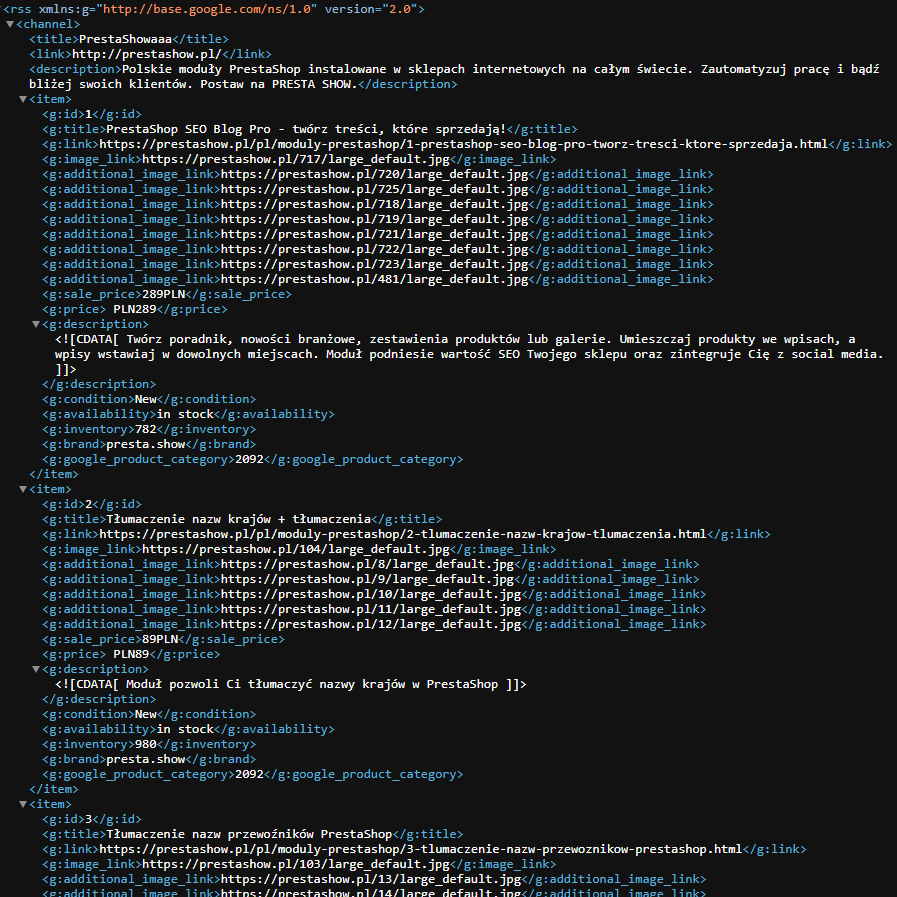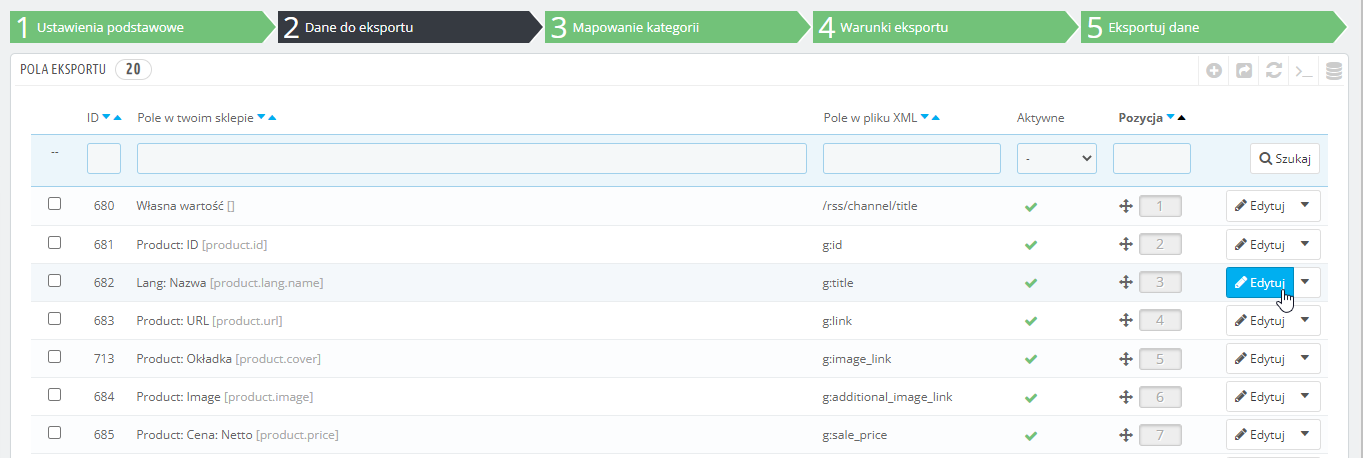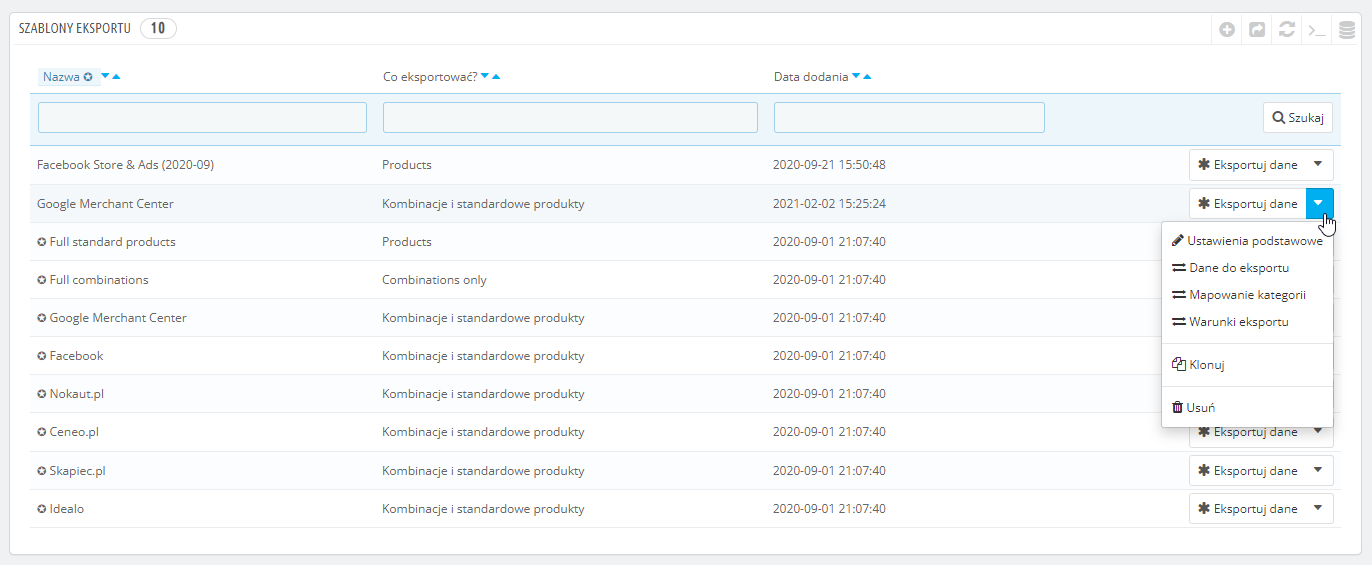What is XML?
Use XML to integrate your PrestaShop store
A good exported XML file (feed) will make your store and products available to the world and save you a ton of time! In this post, we will discuss exporting your PrestaShop store data to Google Merchant Center's XML format and introduce a good PrestaShop module that guarantees well-generated XML feeds and a stable connection to Google Merchant Center.
XML is the most popular and widely used data storage format.
The XML file is the successor to the CSV (Excel) format. The data columns in the CSV file have become objects in the XML file.
The structured layout of an XML file makes it possible to save the same data, but with greater complexity, while keeping the file light, clear and versatile.
XML files can carry information about a store, products, or customers. XML is used to transfer data between different platforms - most systems allow exporting and importing data in XML format.
A regularly updated XML file is commonly called an XML feed.

An example of an XML file
Get familiar with the structure of an XML feed
Before you start working with an XML file, it's a good idea to familiarize yourself with its contents. Getting to know the structure and data that are in the file will make it easier for you to import or export it to your PrestaShop store.
You can freely view each XML file. You can freely open files of up to a few tens of MB in a web browser. Larger files are worth opening in Notepad or Notepad++.
Below is an example of an XML feed that was exported from a PrestaShop store for uploading product information to Google Merchant Center. You can download the entire file by clicking here.

Feed XML for Google Merchant Center
How to integrate PrestaShop with Merchant Center?
XML can contain a variety of data and have different structures. For example, the feed you upload to Google Merchant Center advertising tools has a slightly different format than the feed for Facebook Marketplace advertising tools.
Google describes in its documentation what an XML feed supported by their sales tools should look like and what data it should have. The structure of such a feed can be variable depending on the specifics of your store and industry, such as what products you sell, what forms of delivery you offer or what currency you want to communicate prices in.
To save time and speed up the process of integrating your store, it is worth using a ready-made module that supports the GMC format, but also allows you to easily manipulate the data you want to export.
Feed XML for Google Merchant Center can consist of up to dozens of different fields describing the product:
- Mandatory fields, e.g. "ID", "title" "image_link", "price", etc.
- Optional fields, such as "additional_image_link" or "sale_price"
PrestaShop XML Feeder
A module for generating XML files in PrestaShop
PrestaShop Feeder module is a guarantee of well-generated XML feeds and a stable connection to the tools you want to integrate into your store.
- You can manage many different XML files in Feeder.
- Feeder has ready integrations for Google Merchant Center, Facebook Marketplace, Idealo, Delcampe, Ceneo and many other platforms.
- Feeder will allow you to build your own XML feed.
- Feeder exports information about products, customers and orders.
- Feeder works with PrestaShop 1.6, 1.7 and 8.x
All XML files are compatible with our PrestaShop Importer module. This means that having Feeder and Importer modules you can integrate any two PrestaShop stores between each other - one store exports data and the other store imports this data.
- 4.8
Free support BEST125,00 EUR
Feeder is an XML feed export module
Fast and efficient
PrestaShop XML Feeder module generates even huge XML files quickly and does not significantly load your server. The module allows you to select and modify the data that will go into the feed.

.webp)
XML feed "on demand"
The feeder can generate a file when the URL is called. If you want, for example, to share an XML file with current data (prices, stocks, etc.) - use an on-demand XML feed - the XML file will be generated the moment the URL link to the feed is called.
Feed XML "read-only"
If you are providing large XML files to multiple entities (e.g. Ceneo, Facebook, Google, etc.) - give them a read-only XML feed. Downloading such a file will only generate network traffic and does not load the CPU and RAM of the server.

Ready-made XML templates that you can modify
PrestaShop Feeder has many ready-made XML integrations
In the module you will find ready-made integrations for the most popular sales platforms
- Google Merchant Center
- Facebook Marketplace
- Your own XML feeds
- Idealo
- Delcpampe
- Ceneo
- Skapiec
- and many more...











